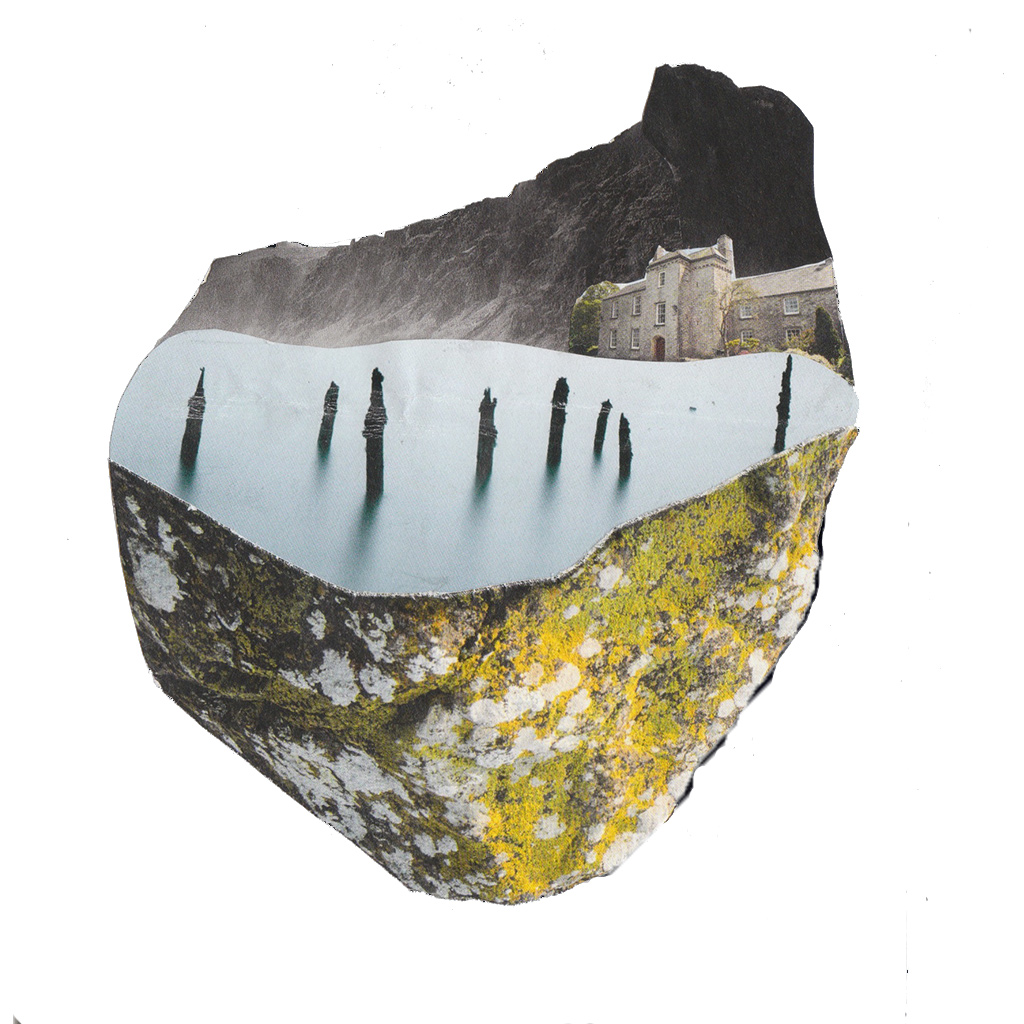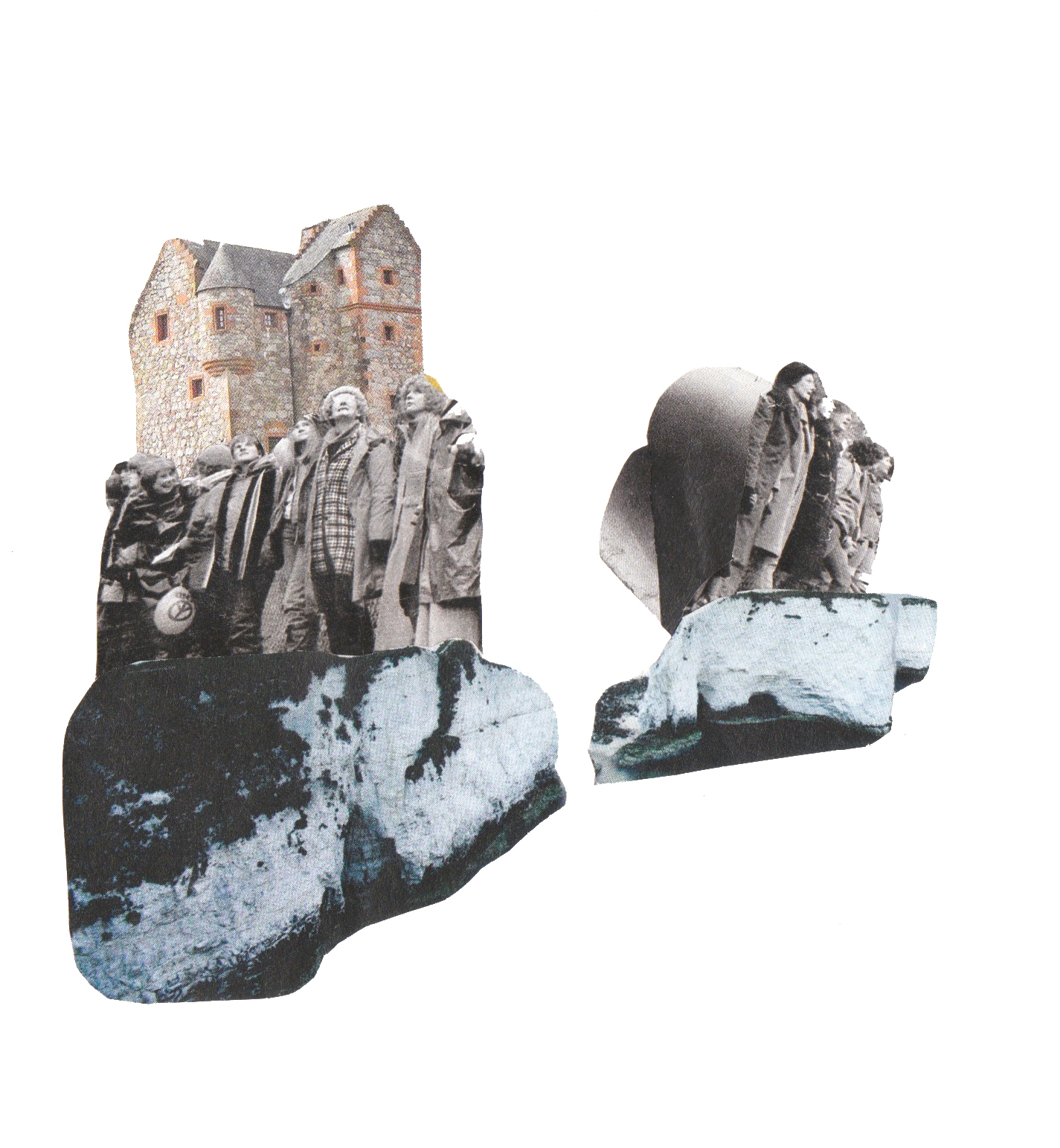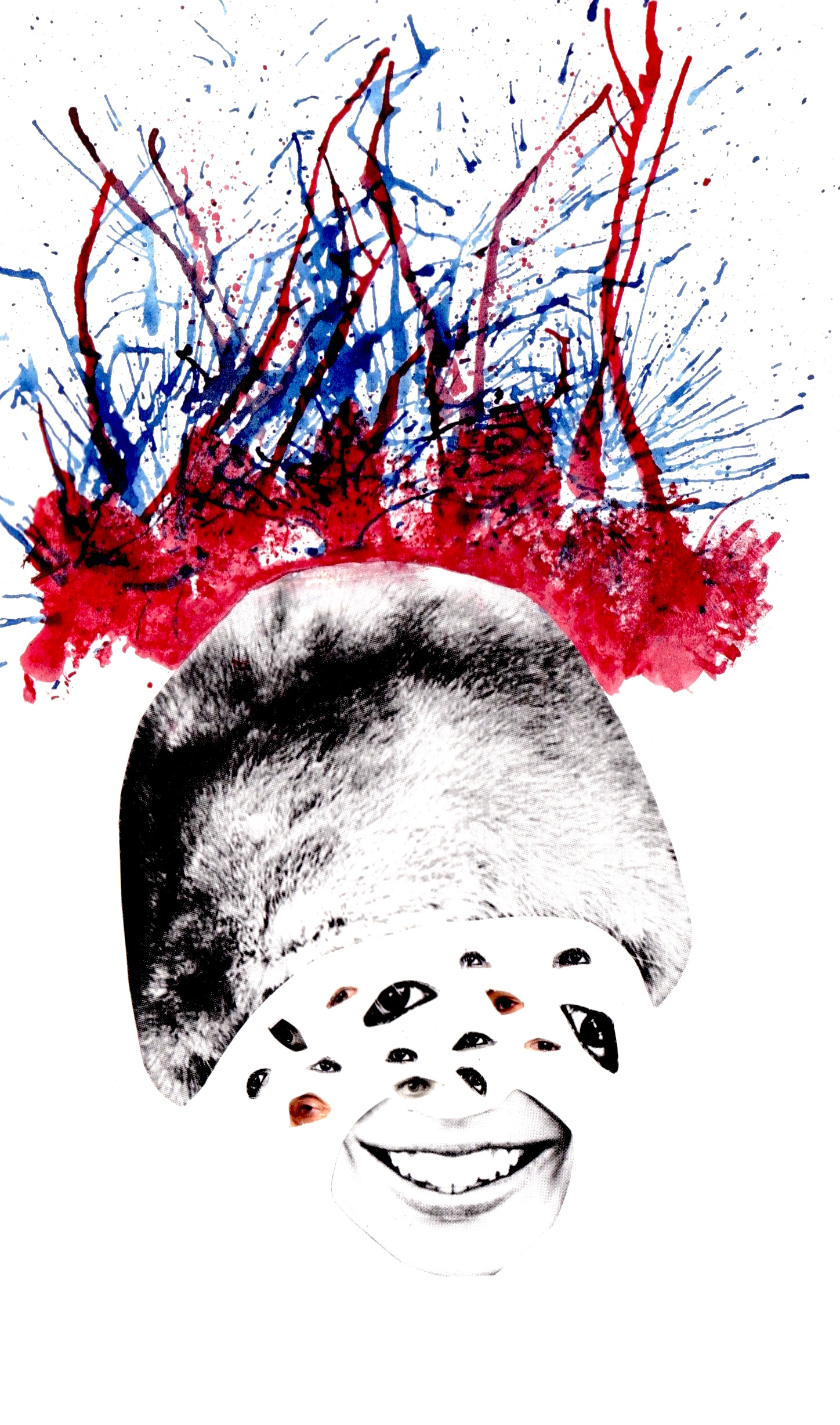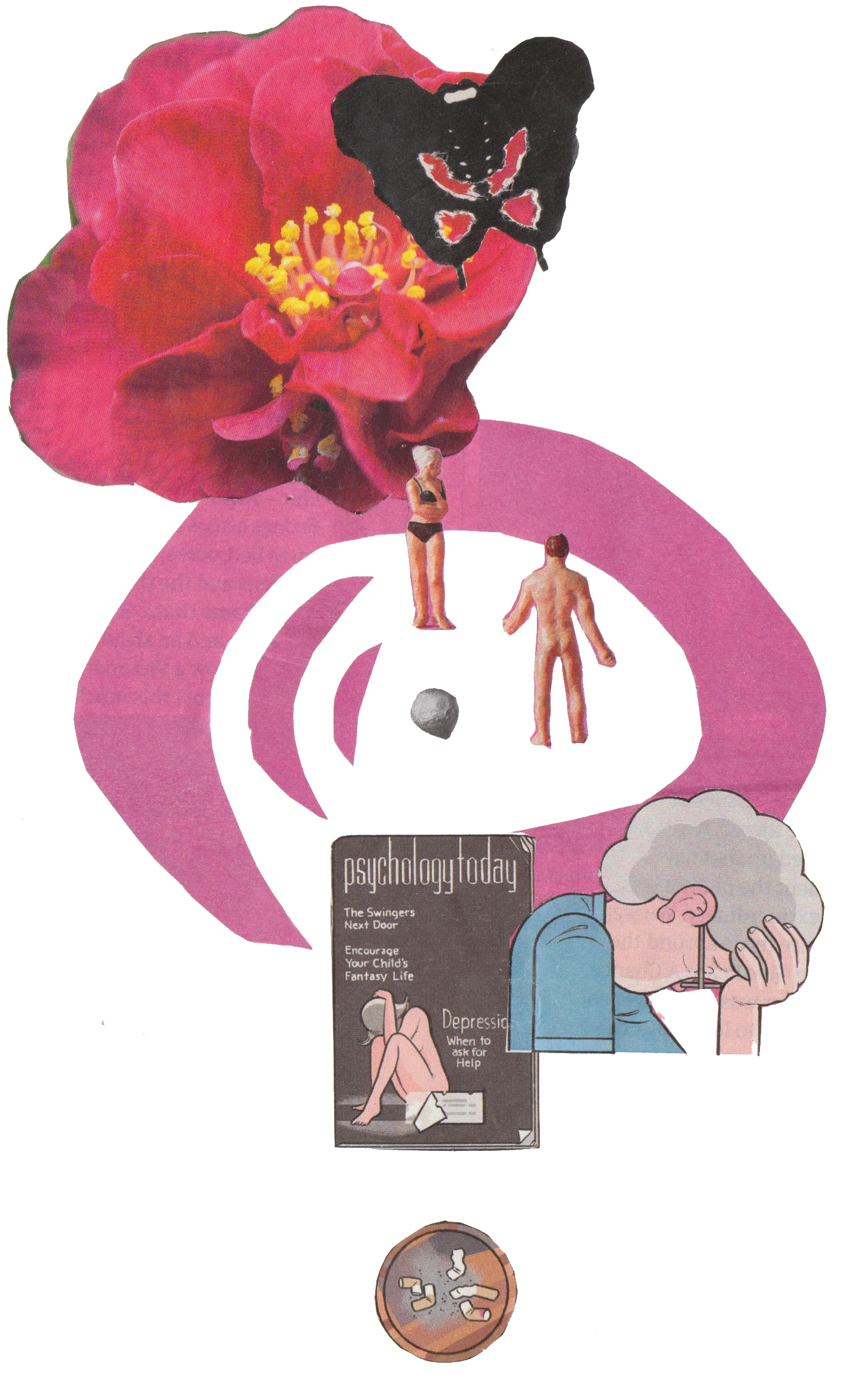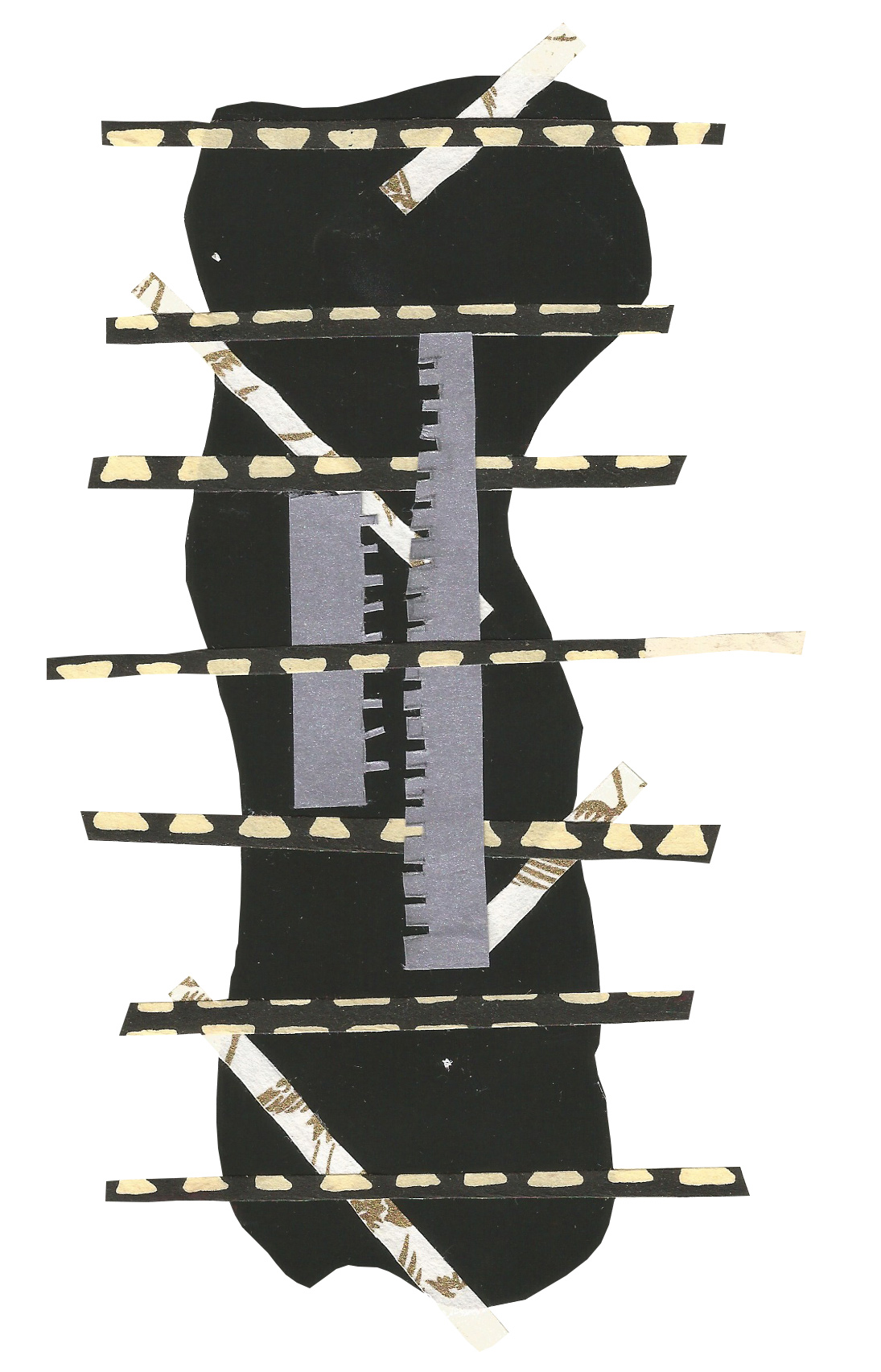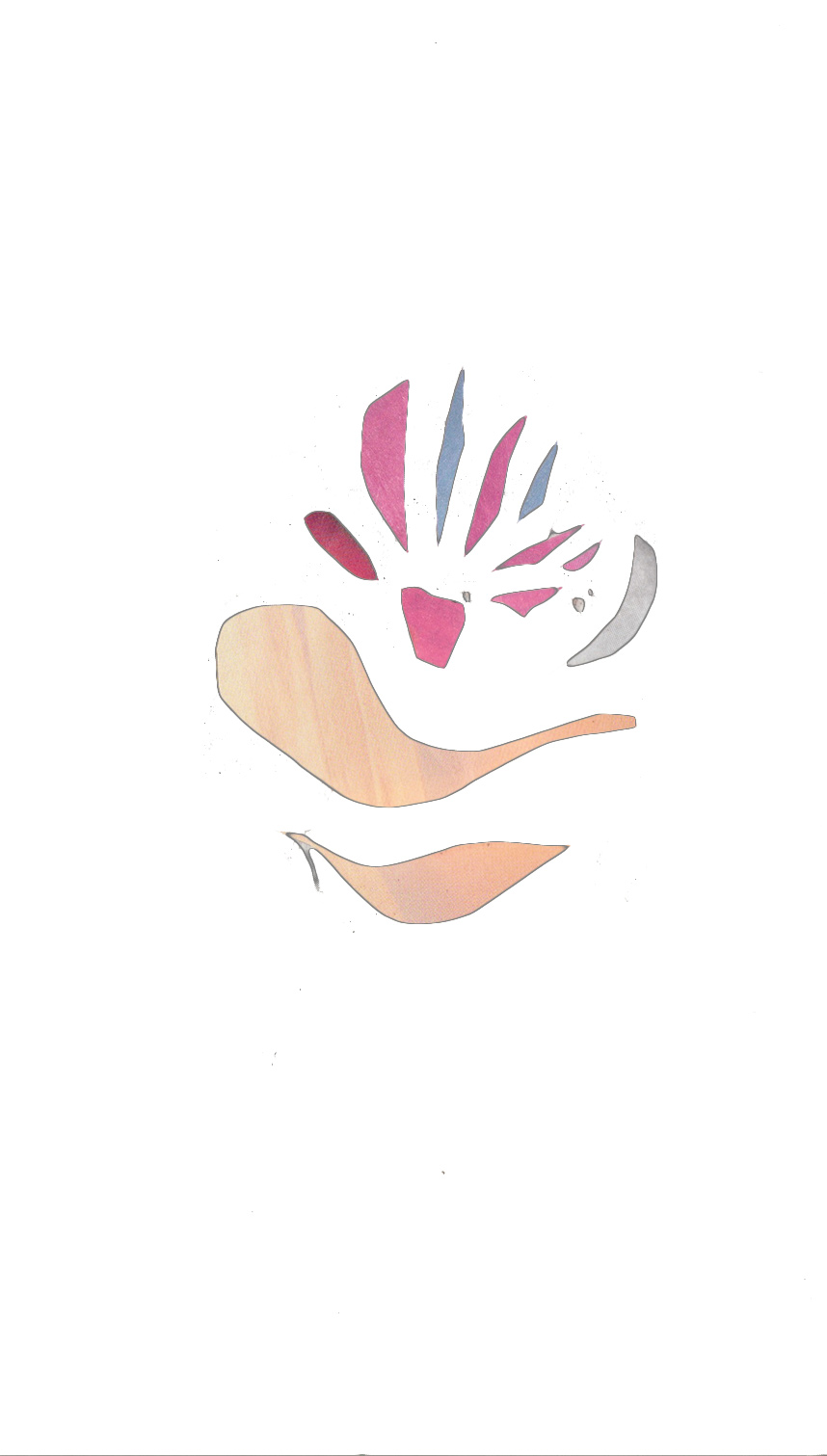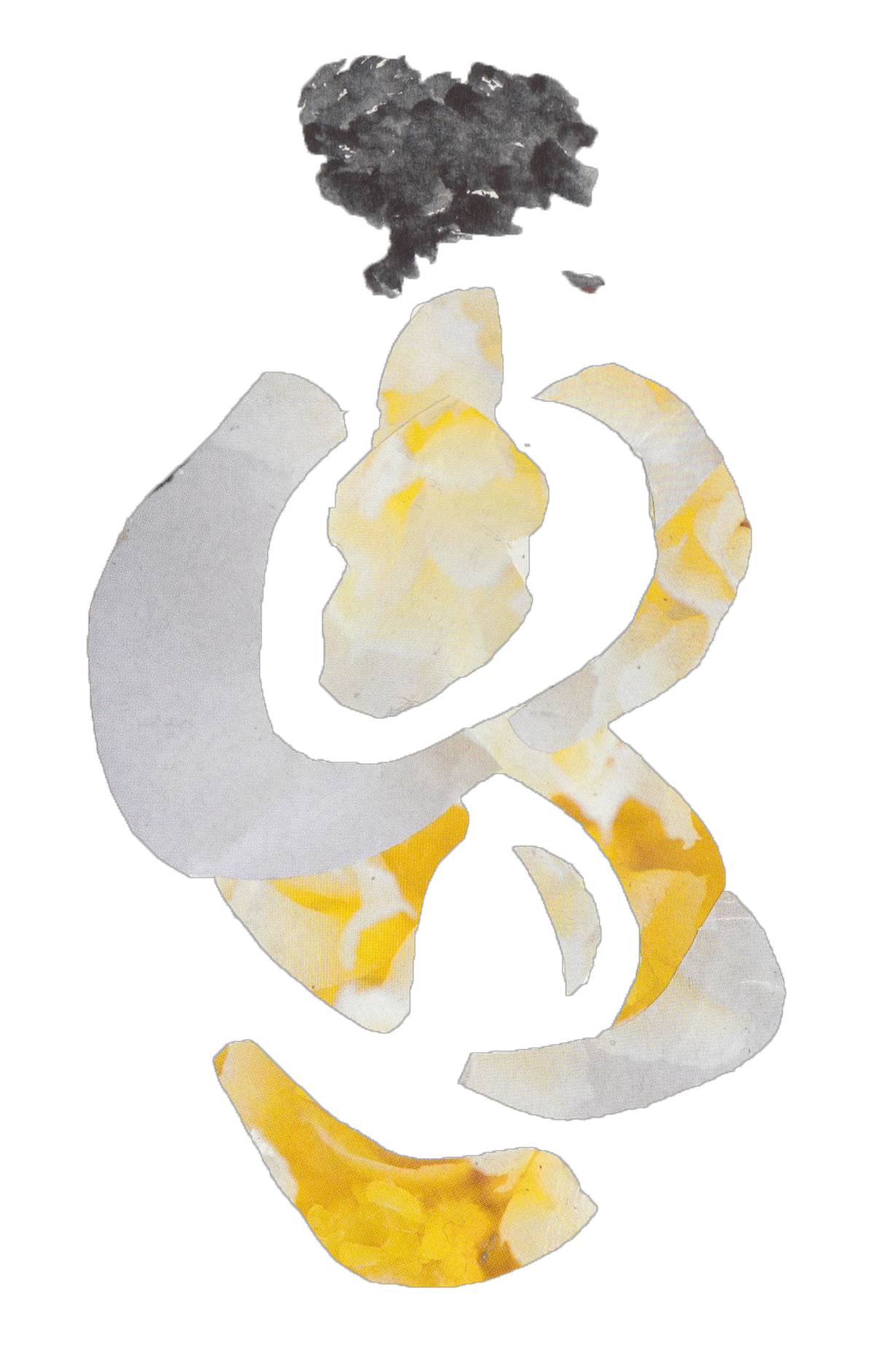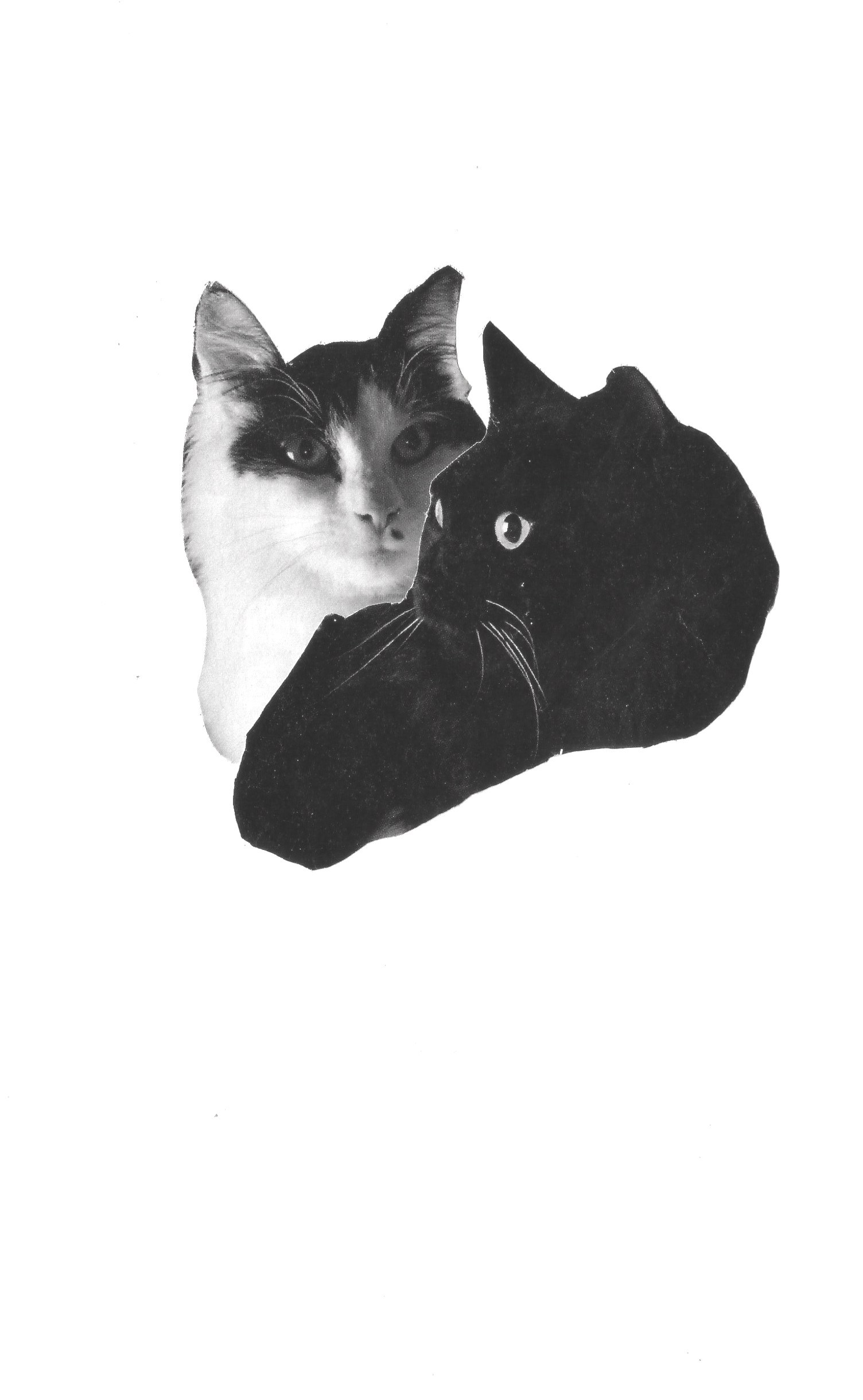Alistair Hornsby was born and raised in Luxembourg. He is currently finishing a degree in Anthropology at Sussex University after a year abroad in Oregon. Art and photography are his pastimes; Brighton and its people are his muses.
What is it that attracts you to collage over other forms of art?
Collage is one of my favourite forms. I enjoy the open-endedness of finding, arranging, repurposing shapes and patterns to create elements that convey a sense or sign. You may start with an idea, but that might all change with the materials you collect during the process, meaning you can never predict where you will end up.
Are there particular forms and shapes that you are more intrigued by in your art?
Natural textures, soft colours, but also iconography and bodies. Usually, I’m looking to make sense of visual tension or cohesion in the whole image. I am fascinated by eyes, however – especially in glossy magazines where they are doctored to look intense.
Do you want your art to carry meaning?
It does in many ways for me, they bring back memories of when and where they were made. My pieces do have ideas and perspectives that influence them, the concept or idea I have in mind initially inspires the images and objects I use, but their meaning is open to interpretation.
Your work seems to combine images of human life and the natural world; why is this?
I like contrasting natural textures and shapes with those from human or artificial sources. We shape nature; nature shapes us, so I see the two as one in a sense. I think when I make a collage I want to have the borders between each become ambiguous.
Do the ideas of dystopia or utopia feature in your images?
Perhaps. But I can’t say I include these themes consciously. I do think that the ideas that influence the pieces, like OnGender or MindsEye are dystopian in nature, whereas others are focused on more utopian natural images.
Do you prefer working digitally or by hand?
By hand as there is less room to make mistakes making the results more organic when you inevitably do. The little alterations that happen because you missed a cut or your hands are too covered in glue are often what leads to more interesting arrangements.
Finally, do you have any future plans regarding your artwork?
Do more! I want to continue to work on similar smaller pieces and move to doing larger projects, including new and different materials.
Words: Emma Phillips and Louisa Hunt
Instagram: @alstiar

